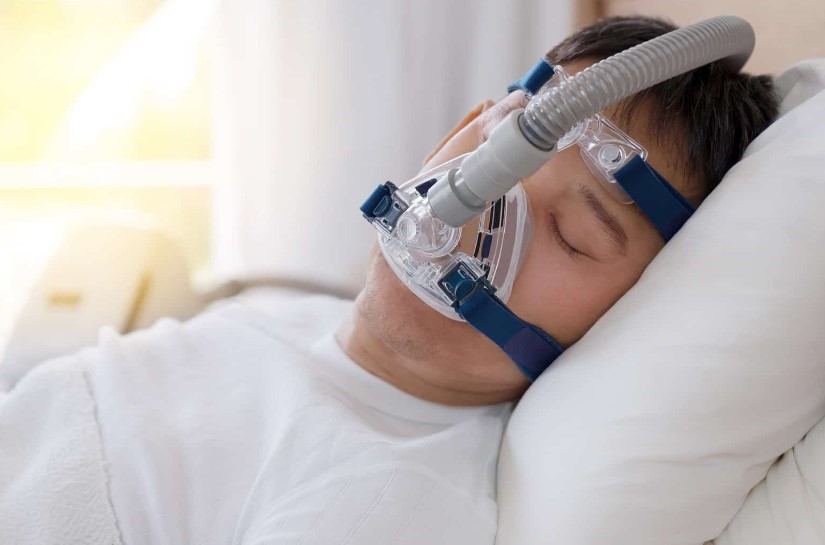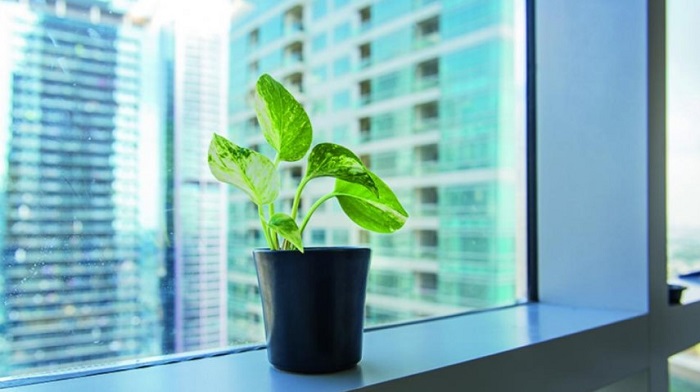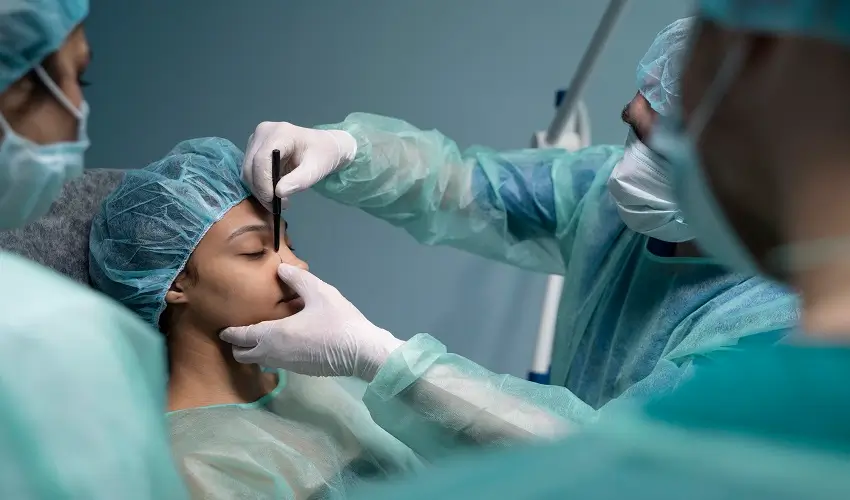You may be asking about your treatment choices if you’ve been diagnosed with sleep apnea. A device known as APAP, which stands for “automatic positive airway pressure,” is one possibility. During sleep, this gadget delivers air pressure through a mask.
In this blog post, we will define APAP login and discuss how it can be used to treat sleep apnea. We will also go over some of the potential hazards and side effects of this therapy choice. If you or someone you know is thinking about getting APAP for sleep apnea, keep reading to find out more.
What is automatic positive airway pressure?
Automatic Positive Airway Pressure (APAP) is a type of sleep apnea therapy that automatically adjusts the amount of pressure delivered to the patient’s airway during sleep. Unlike traditional Continuous Positive Airway Pressure (CPAP) therapy, which delivers a constant pressure, APAP delivers a varying pressure depending on the patient’s needs, so the patient only receives the pressure required to keep their airway open. This can make the therapy more comfortable for patients and improve treatment adherence. APAP is commonly used to treat obstructive sleep apnea, a condition characterized by repeated episodes of partial or complete blockage of the airway during sleep.
How does it work?
APAP works by monitoring the patient’s breathing patterns and adjusting the pressure delivered to the airway accordingly. The device is equipped with sensors that measure the patient’s breathing and determine if their airway is obstructed. If an obstruction is detected, the device increases the pressure delivered to the airway to help keep it open. Once the obstruction is cleared, the pressure is reduced. This process is repeated throughout the night as needed.
APAP devices use algorithms to determine the optimal pressure needed to keep the airway open. This pressure can be different from moment to moment and can vary depending on the patient’s sleep position, body position, and other factors. By continuously monitoring the patient’s breathing and adjusting the pressure accordingly, APAP can provide effective treatment for sleep apnea with a high level of comfort.
Overall, APAP is designed to provide patients with individualized treatment that takes into account their unique needs and circumstances. By automatically adjusting the pressure, APAP helps ensure that the patient receives the correct amount of pressure to treat their sleep apnea, which can improve treatment outcomes and help patients get a better night’s sleep.
Pros and Cons of APAP login
Automatic positive airway pressure (APAP) is a treatment for sleep apnea, a condition in which a person’s airway becomes partially or completely obstructed during sleep. Here are some of the pros and cons of using APAP:
Pros:
- Effective treatment: APAP has been shown to be effective in treating sleep apnea and reducing its symptoms, such as snoring and daytime sleepiness.
- Customizable pressure: Unlike continuous positive airway pressure (CPAP), which uses a constant pressure, APAP adjusts the pressure automatically based on the patient’s breathing patterns and needs. This can lead to more comfortable and effective treatment.
- Less noise: APAP machines tend to be quieter than CPAP machines, making them less disruptive to sleep.
- Improved compliance: APAP is considered to be a more comfortable and less intrusive treatment, which can increase patient compliance and lead to better long-term outcomes.
Cons:
- Cost: APAP machines can be more expensive than CPAP machines, and they may not be covered by all insurance plans.
- Maintenance: APAP machines require regular maintenance and cleaning, which can be time-consuming and add to the cost of treatment.
- Complexity: APAP machines can be more complex and difficult to use than CPAP machines, which can make it harder for some patients to adhere to their treatment.
- False alarms: Some APAP machines may be triggered by false alarms, such as patient movement or changes in position, which can disrupt sleep and lead to dissatisfaction with treatment.
It’s important to note that the most appropriate treatment for sleep apnea will depend on each individual’s unique needs and circumstances, and patients should work with their doctor to determine the best option for them.
Alternatives to APAP
There are several alternatives to automatic positive airway pressure (APAP) for the treatment of sleep apnea:
- Continuous positive airway pressure (CPAP): This is the most commonly used treatment for sleep apnea and involves wearing a mask connected to a machine that delivers a constant stream of air to keep the airway open.
- Oral appliances: These are custom-fitted devices that reposition the jaw and tongue to prevent airway collapse during sleep.
- Surgery: In some cases, surgery may be recommended to treat sleep apnea, such as uvulopalato pharyngo plasty (UPPP) or genioglossus advancement (GA).
- Lifestyle changes: Making changes to one’s lifestyle, such as losing weight, avoiding alcohol and sleeping on one’s side, can help reduce the symptoms of sleep apnea.
- Adaptive servo-ventilation (ASV): This is a type of therapy that uses a machine to monitor breathing patterns and adjust air pressure accordingly. It is typically recommended for patients with central sleep apnea or complex sleep apnea syndrome.
It’s important to note that the most appropriate treatment will depend on each individual’s unique needs and circumstances, and patients should work with their doctor to determine the best option for them. In some cases, a combination of treatments may be recommended.
Risks Associated With APAP Login
Automatic positive airway pressure (APAP) is generally considered a safe and effective treatment for sleep apnea. However, as with any medical treatment, there are certain risks associated with APAP therapy. Some of the risks include:
- Skin irritation and pressure sores: The mask used with APAP therapy can cause skin irritation and pressure sores, especially if it is not properly fitted or cleaned.
- Air leaks: Air leaks can occur when the mask doesn’t fit properly, allowing air to escape. This can reduce the effectiveness of the treatment and be disruptive to sleep.
- Dry mouth and nasal congestion: The constant flow of air can dry out the mouth and cause nasal congestion, which can be uncomfortable and disruptive to sleep.
- Equipment malfunctions: The APAP machine and mask may malfunction, which can reduce the effectiveness of the treatment and lead to increased frustration and dissatisfaction with the treatment.
- Cost: APAP machines and supplies can be expensive, and insurance coverage may vary, which can make the treatment cost-prohibitive for some patients.
It’s important to note that these risks are generally rare and can be minimized by using the equipment correctly and seeking regular follow-up care from a healthcare provider. Patients should work with their doctor to determine the best treatment option for their needs and monitor their symptoms closely to ensure that their treatment is effective.
APAP vs CPAP
| APAP | CPAP |
| Automatic Positive Airway Pressure | Continuous Positive Airway Pressure |
| Variable Pressure During Inhale | Constant Set Pressure During Inhale |
| Self Adjusts | Single Set Pressure |
| More Comfortable for New Users | More Affordable |
| Great When Your Breathing Fluctuates | Not the Best Choice for Those With Changes in Breathing |
APAP Login FAQ’S
1- Is APAP better than CPAP?
APAP (Automatic Positive Airway Pressure) and CPAP (Continuous Positive Airway Pressure) are both treatments for sleep apnea. They work similarly by delivering air pressure through a mask to keep the airway open during sleep, but there are some key differences between the two.
APAP automatically adjusts the air pressure delivered based on the patient’s breathing patterns, whereas CPAP delivers a constant air pressure. This means that APAP can be more comfortable for some patients as it can respond to changes in the patient’s breathing throughout the night. Additionally, because APAP can reduce the air pressure when it is not needed, it may be more effective at reducing the pressure-related side effects associated with CPAP, such as dry mouth and stuffy nose.
CPAP, on the other hand, is a simpler and more established technology, and it is often the preferred option for patients with severe sleep apnea, as it delivers consistent and effective air pressure.
Ultimately, the choice between APAP and CPAP will depend on the individual patient’s needs, preferences, and the severity of their sleep apnea. It is best to consult with a healthcare provider to determine the best option for you.
2- What is the difference between CPAP, BiPAP and APAP?
CPAP (Continuous Positive Airway Pressure), BiPAP (Bilevel Positive Airway Pressure), and APAP (Automatic Positive Airway Pressure) are all types of treatment for sleep apnea, a condition in which a person’s airway becomes obstructed during sleep.
CPAP delivers a constant and continuous flow of air pressure through a mask to keep the airway open during sleep. It is usually the first line of treatment for sleep apnea and is effective for many patients. However, some patients find it difficult to tolerate the constant pressure.
BiPAP is similar to CPAP but delivers two levels of pressure: a higher pressure when the person inhales and a lower pressure when they exhale. This can make it more comfortable for some patients as it can relieve pressure-related side effects, such as dry mouth and stuffy nose. BiPAP is often used to treat central sleep apnea, a type of sleep apnea where the brain doesn’t send proper signals to the muscles that control breathing.
APAP, or Automatic Positive Airway Pressure, automatically adjusts the air pressure delivered based on the patient’s breathing patterns. It can provide the appropriate amount of pressure needed to keep the airway open, but can also reduce the pressure when it is not needed. APAP is often preferred by patients who find it difficult to tolerate the constant pressure of CPAP, as it can be more comfortable.
Ultimately, the choice between CPAP, BiPAP, and APAP will depend on the individual patient’s needs, preferences, and the severity of their sleep apnea. It is best to consult with a healthcare provider to determine the best option for you.
3- What does APAP help with?
APAP (Automatic Positive Airway Pressure) is a type of treatment that is used to help with sleep apnea. Sleep apnea is a condition in which a person’s airway becomes obstructed during sleep, causing them to briefly stop breathing multiple times throughout the night. This can lead to disrupted sleep and a range of health problems, such as fatigue, headache, and high blood pressure.
APAP works by delivering air pressure through a mask to keep the airway open during sleep. The air pressure is automatically adjusted based on the patient’s breathing patterns, which means it can provide the appropriate amount of pressure needed to keep the airway open, but can also reduce the pressure when it is not needed. This can make it more comfortable for some patients compared to other forms of treatment, such as CPAP (Continuous Positive Airway Pressure), which delivers a constant flow of air pressure.
By keeping the airway open, APAP can help to prevent sleep apnea events and promote a more restful and rejuvenating sleep. This, in turn, can help to reduce the symptoms of sleep apnea, such as excessive daytime sleepiness and improved quality of life.
It is important to note that APAP is not a cure for sleep apnea, but rather a treatment that can help manage the symptoms. It is best to consult with a healthcare provider to determine if APAP is right for you and to develop a comprehensive treatment plan.
4- How loud is an APAP machine?
The noise level of an APAP (Automatic Positive Airway Pressure) machine can vary depending on the specific model and manufacturer. Generally, APAP machines are designed to be as quiet as possible, as loud noise can interfere with sleep.
Most APAP machines have a decibel (dB) rating that provides an estimate of the noise level produced by the machine. A typical APAP machine has a noise level of around 30 to 40 dB, which is similar to the sound of a quiet library. Some models are designed to be even quieter, with a noise level of around 25 dB or less, which is comparable to the sound of a soft whisper.
It’s worth noting that the noise level of an APAP machine can also be influenced by factors such as the placement of the machine, the type of mask being used, and the presence of other noises in the room.
If you are concerned about the noise level of an APAP Login machine, it is best to try out different models in person or to consult with your healthcare provider for recommendations on quieter models. Additionally, using a white noise machine or a fan in the room can help to mask any noise produced by the APAP machine.
Final Words
APAP Login (Automatic Positive Airway Pressure) is a type of treatment that is used to help manage sleep apnea, a condition in which a person’s airway becomes obstructed during sleep. APAP delivers air pressure through a mask to keep the airway open, and automatically adjusts the pressure based on the patient’s breathing patterns. This makes it more comfortable for some patients compared to other forms of treatment, such as CPAP (Continuous Positive Airway Pressure). The noise level of an APAP machine can vary depending on the specific model and manufacturer, but most are designed to be as quiet as possible. It is best to consult with a healthcare provider to determine if APAP is right for you and to develop a comprehensive treatment plan.





